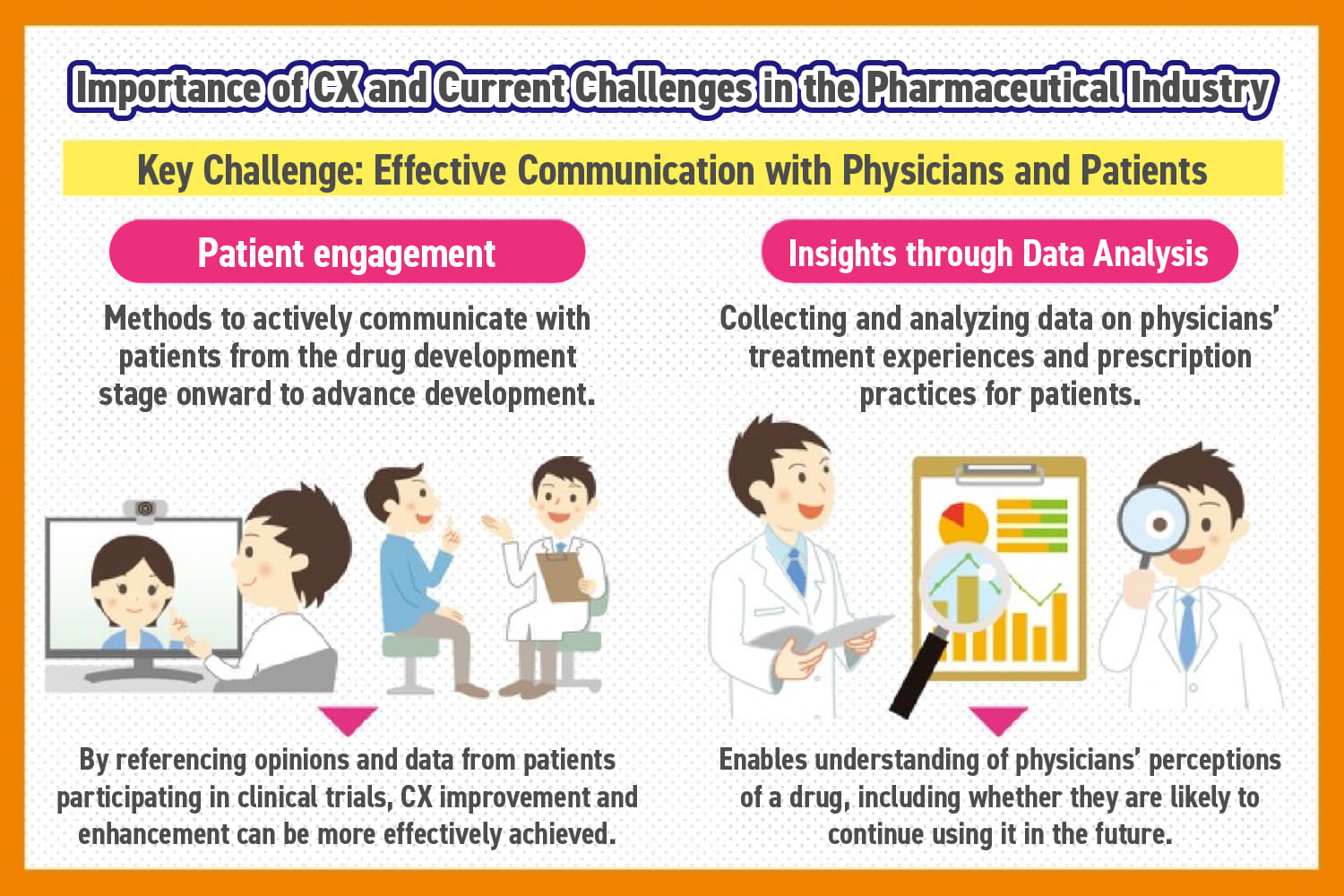In recent years, customer experience (CX) has become increasingly important in the pharmaceutical industry. While CX has long been a standard practice in other sectors, it is now emerging as a key factor in pharma. Implementing effective CX strategies allows pharmaceutical companies to better meet the needs of healthcare professionals (HCPs) and patients, improve treatment adherence, and drive business growth.
This article explores the fundamentals of pharma CX, its benefits, common challenges, and practical strategies to optimize the customer journey through digital and multi-channel solutions.
What is Pharma CX?
Pharma CX, or customer experience, refers to the holistic value that patients and HCPs perceive throughout their interactions with a pharmaceutical company, from initial awareness to onboarding, support, and follow-up. Beyond product efficacy, CX emphasizes emotional engagement and meaningful interactions, helping companies differentiate themselves in a competitive market.
Effective CX in pharma involves collecting feedback at critical points, analyzing it in real-time, and iteratively improving services based on insights. Unlike traditional market research, which captures data at a single point in time, CX is a continuous process that allows companies to respond proactively to patient and HCP needs.
Why Pharma CX matters

Strong CX benefits both patients and companies. It improves patient outcomes by providing timely information and support, enhancing medication adherence and overall satisfaction. It strengthens HCP relationships by ensuring physicians and caregivers are supported with relevant and actionable information, building trust and collaboration. CX also drives business growth as positive experiences foster loyalty, increase engagement with patient support programs, and can influence product adoption. In addition, CX tools help improve clinical trial recruitment, retention, and diversity, providing more accurate and actionable insights. Focusing on CX allows pharma companies to manage the patient journey effectively, ensuring every interaction adds value and builds long-term trust.
The role of patient engagement
Patient engagement is central to pharma CX. Engaged patients are more likely to follow treatment plans, report side effects promptly, and participate in support programs. Engagement strategies include personalized communication, educational resources, and interactive digital tools. By understanding patient needs, pharma companies can design programs that provide meaningful support and improve overall health outcomes.
Insights through data analysis
Data analysis complements patient engagement by enabling pharma companies to understand physicians’ treatment experiences and prescription practices. By collecting and analyzing this information, companies can gain insights into how physicians perceive a drug, whether they are likely to continue prescribing it, and how to refine support programs accordingly. Using dashboards, charts, and other analytics tools, these insights help tailor interactions with both HCPs and patients, ensuring that programs are evidence-driven and impactful.
Differences from RWD
Real-World Data (RWD) is raw data from medical records, hospitals, and other sources. Real-World Evidence (RWE) is the insight derived from analyzing RWD. In short, RWD provides the data, RWE provides the evidence, both essential for data-driven decisions in pharma.
What is Net Promoter Score (NPS)?
NPS measures customer trust and loyalty toward a product or service. In pharma, respondents rate their likelihood of recommending a drug on a scale from 0 to 10: 0–6 are detractors, 7–8 are neutral, and 9–10 are promoters. NPS is calculated by subtracting the percentage of detractors from the percentage of promoters.
NPS helps identify why doctors or patients would recommend or not a product, providing actionable insights to enhance CX.
CX strategy in the Pharmaceutical Industry
Improving CX in pharma requires a combination of digital tools, regulatory awareness, and multi-channel communication.
Utilization of digital transformation (DX)
Digital transformation (DX) involves leveraging AI, Internet of Things (IoT), and big data to create new business models. Digital channels allow companies to communicate and provide information efficiently.
AI and IoT are essential for analyzing large volumes of data and generating actionable insights.
Harmonizing Regulations and Compliance
When adopting digital tools, companies must ensure full compliance with regulations. Failing to do so can harm corporate reputation and undermine CX initiatives. A solid regulatory foundation is crucial for sustainable CX improvement.
Multi-Channel Optimization
Increasing touchpoints with HCPs requires effective multi-channel communication. Examples include websites, remote MR services, and chatbots. Using these channels strategically enables more efficient CX improvement and better engagement with doctors and patients.
The Pharmaceutical Industry is Seeking to Improve CX
Today, pharma companies are expected to actively engage with HCPs and patients, moving beyond traditional face-to-face interactions. Digital transformation and multi-channel strategies allow for more effective communication and information gathering.
However, compliance remains critical. Companies must balance innovation with regulatory adherence to protect their reputation and ensure sustainable CX improvements.







